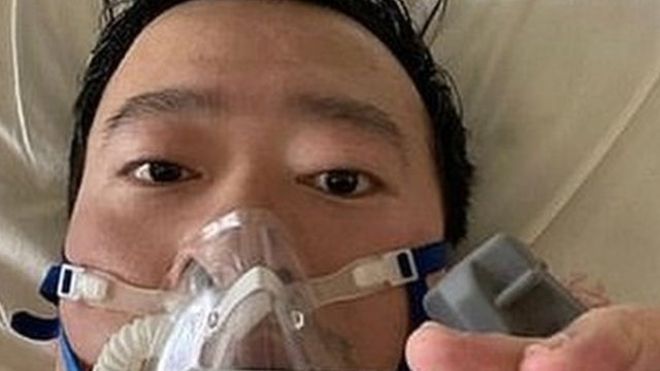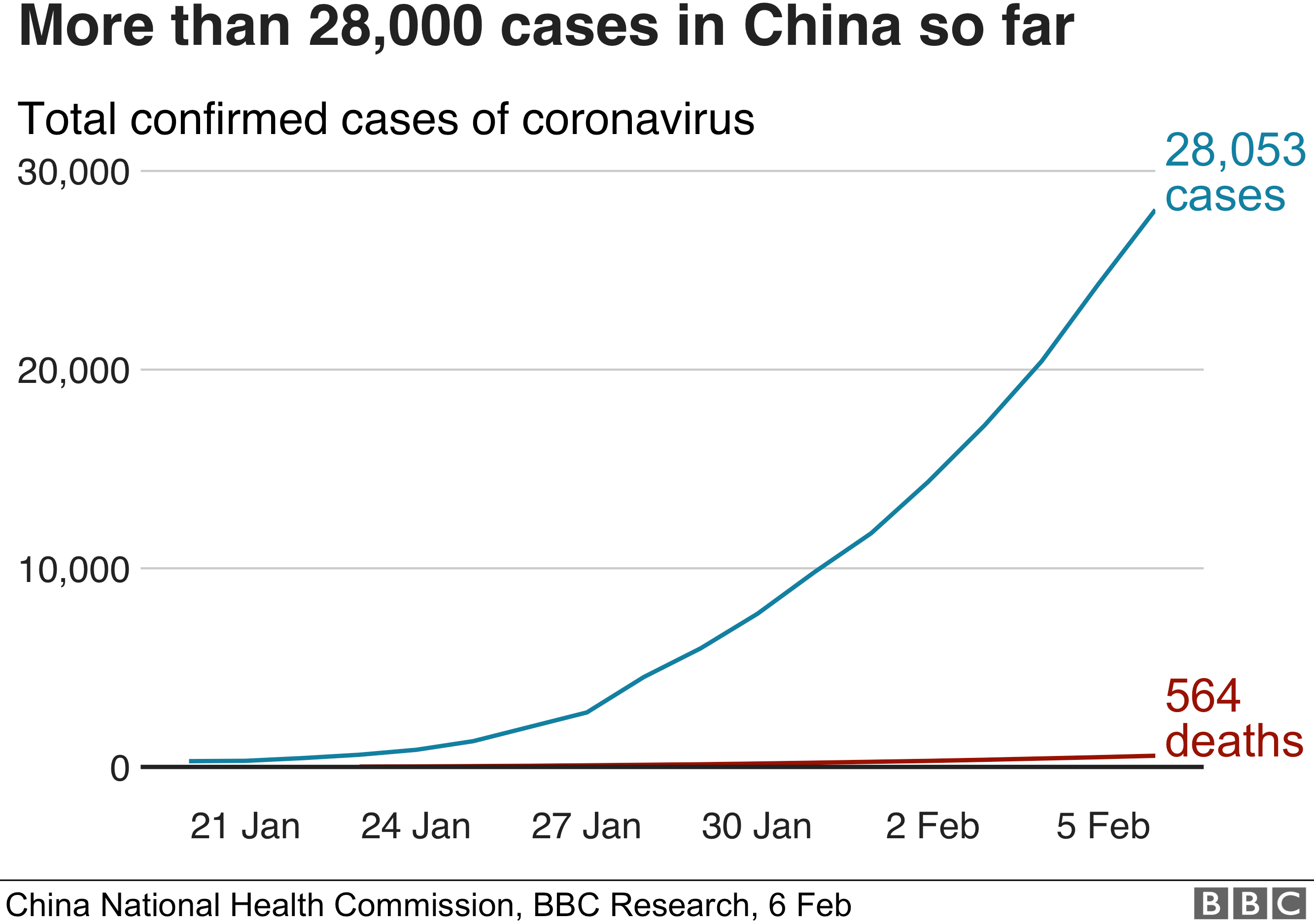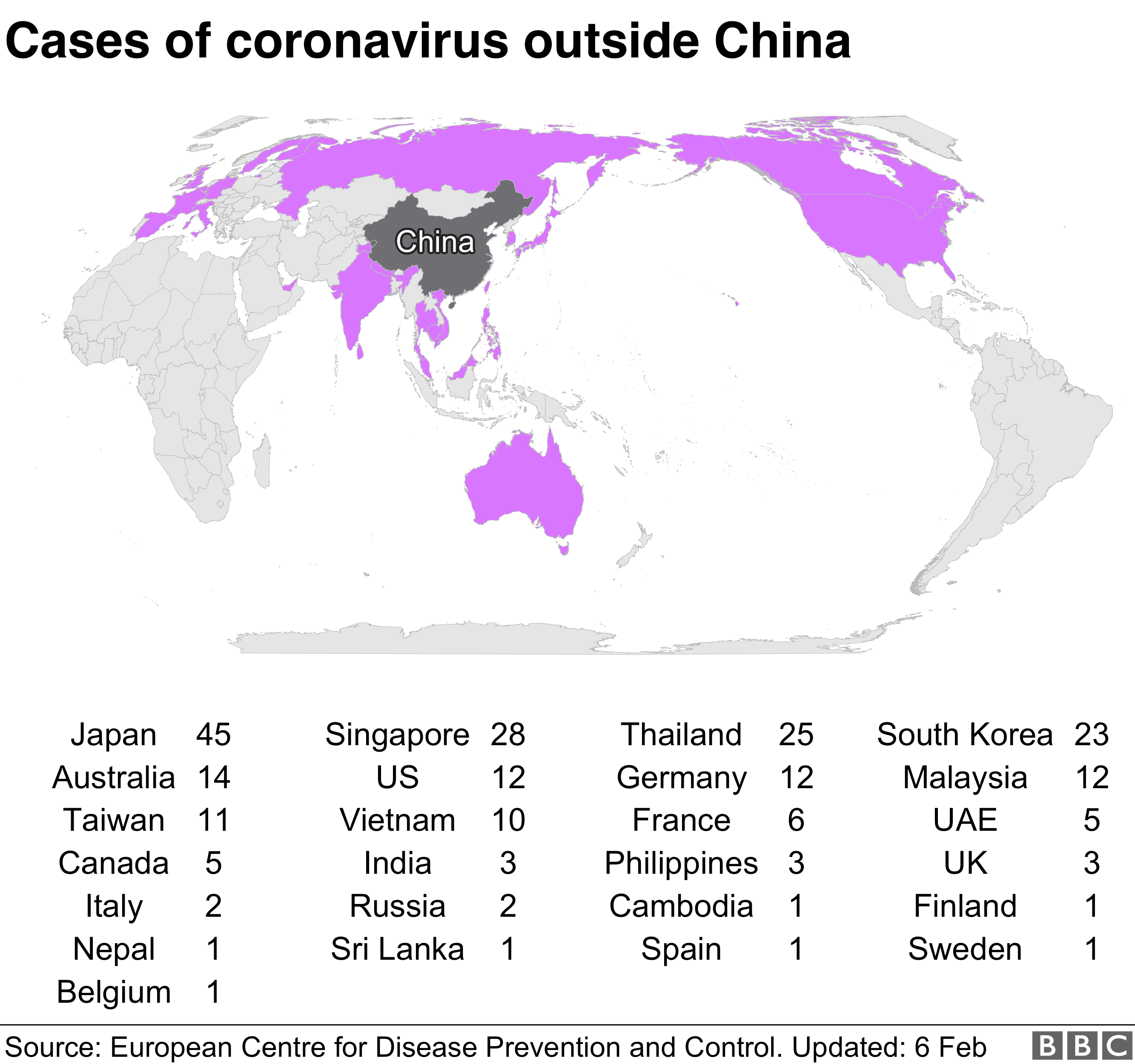Chinese media have changed a report that a doctor who blew the whistle on the coronavirus outbreak has died of the infection.

The state-run Global Times said Li Wenliang had died in Wuhan but later reported he was instead critically ill.
The People’s Daily had earlier sent out a tweet saying Dr Li’s death had sparked “national grief”.
Dr Li warned fellow medics about the virus on 30 December but was told by police to stop making “false comments”.
The coronavirus has now killed more than 560 people and infected over 28,000 in China.
It causes severe acute respiratory infection and symptoms usually start with a fever, followed by a dry cough. Most people infected are likely to fully recover – just as they would from a flu.
How did the confusion occur?
Global Times and other Chinese media initially sent out reports that Dr Li, 34, had died from coronavirus.
It was then picked up by international news organisations. The World Health Organization sent out a tweet expressing sorrow at his death.
But Global Times then carried a report from Wuhan Central Hospital saying that Dr Li’s heart had stopped beating at 21:30 local time (13:30 GMT) and he was given resuscitation treatment. Dr Li was currently in a critical condition, it said.
The news of his death had triggered a huge wave of popular reaction on Weibo – China’s equivalent of Twitter.
Most of the coronavirus victims have been over the age of 60 or have suffered from other medical conditions, according to China’s health authorities. Dr Li’s medical history is not known.
What is Li Wenliang’s story?
Dr Li, an ophthalmologist, posted his story on the Weibo site from a hospital bed a month after sending out his initial warning.
Dr Li had noticed seven cases of a virus that he thought looked like Sars – the virus that led to a global epidemic in 2003.
- The Chinese doctor who tried to warn others about coronavirus
- Diary of a life in locked-down Wuhan
- A visual guide to the outbreak
On 30 December he sent a message to fellow doctors in a chat group warning them to wear protective clothing to avoid infection.
Four days later he was summoned to the Public Security Bureau where he was told to sign a letter. In the letter he was accused of “making false comments” that had “severely disturbed the social order”.
He was one of eight people who police said were being investigated for “spreading rumours”
Local authorities later apologised to Dr Li.

In his Weibo post he describes how on 10 January he started coughing, the next day he had a fever and two days later he was in hospital. He was diagnosed with the coronavirus on 30 January.
What is the latest on the virus in China?
China is introducing more restrictive measures to try to control the outbreak.
Beijing has banned group dining for events such as birthdays and weddings while cities such as Hangzhou and Nanchang are limiting how many family members can leave home each day.
Hubei province, the worst hit by the virus, has switched off lifts in high-rise buildings to discourage residents from going outside.
Its capital, Wuhan, has a lack of beds and equipment, one senior city official said. Despite the rapid construction of two hospitals, the volume of patients is causing severe strain.
Reports on social media say the Wuhan government is to carry out door-to-door temperature checks on residents.
The city of Dali in Yunnan province was accused of requisitioning a shipment of masks bound for Chongqing. Dali’s government said it could not do anything as the boxes had already been distributed.
The cities of Qingdao and Shenyang also reportedly squabbled over a medical shipment.
Meanwhile, Hong Kong has seen panic buying of goods, including toilet rolls, and there have been huge queues for masks.
What has the response been to the crackdowns?
Human Rights Watch has criticised them, saying China was “treating public health with a sledgehammer”.
Executive director Kenneth Roth said China had suppressed reports in the early days of the outbreak and clamped down on criticism of its handling of the crisis.
“There’s no place for secrecy in fighting an epidemic,” he said.
Although he praised Beijing for quickly sharing the DNA sequence of the virus, he attacked the lockdowns policy.
“Quarantines of this sort typically don’t work. Quarantines, the kind that public health officials advocate, are much more targeted. They’re aimed at people who have been identified as having the virus,” he said.
Mr Roth said there were “huge gaps” in getting people fed, housed and treated.
Chinese officials have strongly defended their approach.
The latest figure to speak out was the Chinese ambassador to the UK, Liu Xiaoming, who said the government was doing everything it could to control, prevent and cure the coronavirus.
But he also said the UK had overreacted by advising an estimated 30,000 British nationals in China to leave and that there had been discrimination against Chinese nationals in the UK.
What’s the latest on infections?
Although the virus has spread overseas, with confirmed infection in some 25 nations, there have so far been only two deaths outside mainland China – one in Hong Kong and one in the Philippines.
The World Health Organization has declared a global health emergency, saying if funds are not allocated now to tackle the outbreak, nations would pay for it later.
Although the official figures in China are of 28,000 infections, some scientists have estimated that the actual rate could be 10 times higher, with the majority of infected people only presenting mild symptoms, not receiving treatment, yet passing on the potentially deadly disease.
Some 3,700 people on the Diamond Princess cruise vessel moored off Japan face testing and quarantine for at least two weeks. It has seen on 20 virus cases.
Another cruise ship with 3,600 passengers and crew is quarantined in Hong Kong with three cases on board.

Leave a Reply
You must be logged in to post a comment.